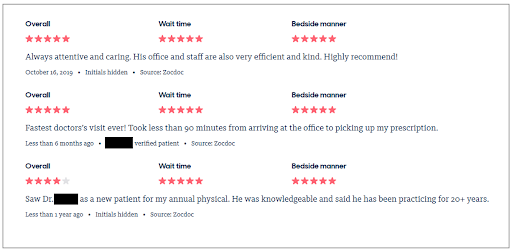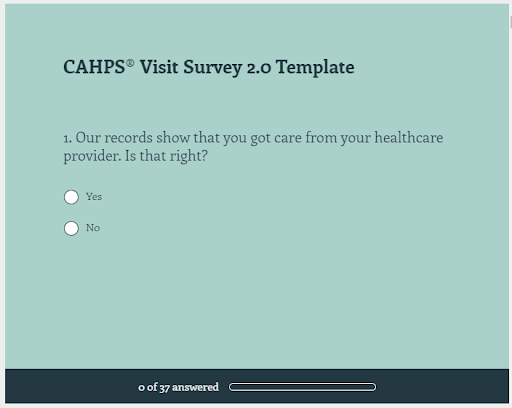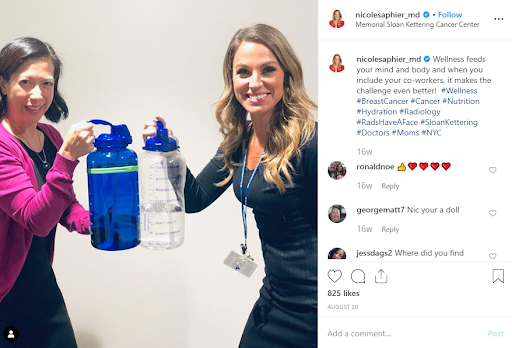On the web – as in life – trust is a hard-won commodity. And that’s particularly true if you’re in the healthcare industry. One sure-fire route to building trust is through “earned media,” which is content about your practice that you didn’t have to pay for. Patient reviews are an example of this type of media.
A 2017 survey by WEGOHealth, a company that describes itself as the world’s largest network of patient leaders, surveyed patients to uncover how they share information. The survey found:
- 83% of respondents trust recommendations from people they know
- 66% trusted consumer opinions that were posted online
This type of content, when positive, presents a huge opportunity for healthcare organizations to promote their providers and their practice by leveraging reviews by patient advocates.
Companies that foster the creation of earned media by their patients can help build trust with new and existing patients while amplifying their brand (or their practice) to the larger community. Let’s take a deeper look.
The power of earned media
Earned media is the most trusted source of information for consumers, closely followed by “owned” media (e.g., branded websites, sponsorships, and opt-in emails). Earned media is comprised of user-generated content (UGC), otherwise known as “publicity” or public relations. Here are some examples:
- Social media posts (by patients about providers, hospitals, and other health-related businesses)
- Facebook messages (peer-to-peer messages asking for recommendations, advice, etc.)
- Posts and comments in forums and discussion groups
- Email exchanges
- Blog posts
In addition to the types of content listed above, earned media can also include articles in third-party publications, profiles on news outlets, or video mentions on social media platforms like YouTube and Facebook.
Creating a patient feedback strategy
For most practices, the first (and most important) step in leveraging user content is to build a patient feedback strategy that encourages existing patients to write reviews and share their experiences.
This may seem like an uncomfortable topic—even an uphill battle—but consider that nearly 80% of patients searching for a new provider reference reviews prior to making a final decision. Ignoring this important communication tactic is no longer an option for doctors or other healthcare providers.
Zocdoc recommends that patient review requests come from the doctors themselves, rather than ancillary or office staff. Feedback and reviews can be solicited in a variety of ways, such as an online survey, and don’t need to be completed in the office during the time of the patient’s visit.
Ideally, the request for feedback will come from the doctor or provider who should communicate how meaningful this information is for improving the practice and ensuring good patient care.
In terms of building a portfolio of patient reviews, providers can facilitate this by requesting the review during the patient’s visit, then follow it up with an email within 24 hours that provides information on how patients can submit a review, such as a link to a review website such as Healthgrades, the practice’s Facebook page, etc.
Good reviews help mitigate poor reviews, which are inevitable, so the more positive reviews you have, the better.
Social media and other forms of UCG
As with reviews and surveys, social media can be incredibly helpful for promoting your practice by leveraging “word of mouth” advertising. To this end, Facebook has a built-in Recommendations feature that enables people to request recommendations of local businesses from within their network.
This above request elicited five responses, several of which included information about local osteopaths and people’s experiences with them. Physicians have little control over this type of interaction, which is another reason why soliciting patient feedback—and addressing patient concerns—is really important when marketing and promoting your practice. Bad experiences get shared and they will dissuade new patients from seeking you out.
While you can’t control what people say about you on social media, you can encourage positive or neutral user-generated content by being part of social media platforms and promoting events, causes, and topics that are important to your patients and your community. Top health organizations such as St. Jude and Memorial Sloan Kettering in New York are great examples of this. These institutions have Facebook, Instagram, and Twitter profiles that they use to amplify their content, spread awareness, promote fund drives, and profile positive patient experiences.
They tend to have a dedicated patient and family community that tags them in shared posts and helps spread the word about the type of care their patients receive and what new patients are likely to expect in the unfortunate event that they’ve been diagnosed with cancer.
Keep in mind that it’s not just patients that can generate user content. Your staff,including affiliated physicians,play a crucial role in making social media work for you. Here is an example of a Sloan Kettering physician sharing a post on her own Instagram profile. With nearly 60,000 followers, she is undeniably a social media influencer. Her post came up when we searched for the hashtag #sloankettering.
Each member of your staff has the potential to amplify your social media content by sharing with their network. It is estimated that each social media user has over one thousand people in their network. It is advisable to provide employees with some guidelines for social media participation and sharing on behalf of your practice or organization. (Check out our case study of a social media guide we created for Consigli.) So much so, that a coordinated effort among your workforce can further build and enhance a positive reputation.
Patient reviews and positive feedback results can also be shared on social media (anonymously or with permission), promoted on your website, and profiled in owned media such as email newsletters.
Monitoring your feedback
Monitoring your social media mentions and other forms of user-generated content is a critical component of your patient feedback strategy. There are agencies and technologies that exist entirely for this purpose, usually bucketed under the title “online reputation management” or “social listening tools.”
While some components of user content monitoring can (and likely should) be outsourced, it is important to ensure that a few key staff members are responsible for overseeing your social media presence and responding to comments, questions, and complaints.
Addressing poor reviews and patient complaints is particularly important. Poor reviews, while unfortunate, can ultimately help your practice by flagging problems that are easy to manage. One study found that 75% of poor reviews and negative comments are unrelated to the patient’s care, such as poor parking options, long waiting times, and rude encounters with staff.
Highly accessible information, cell phones, and the internet have all contributed to the way patients discover and discuss healthcare providers and services. A comprehensive patient feedback and content strategy ensures that you and your practice are part of the conversation.



